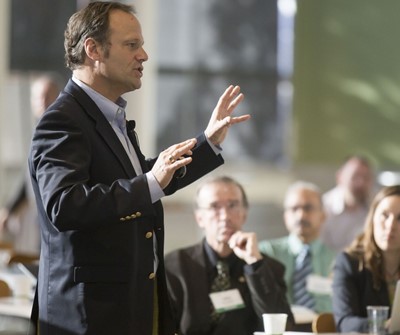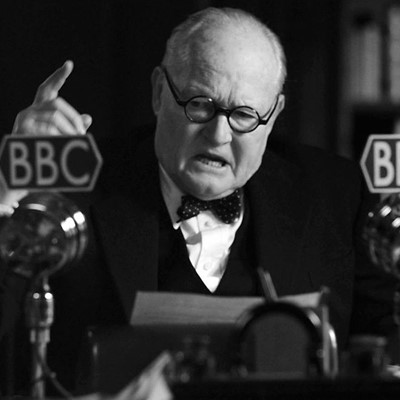
Panel discussions are a popular way to present information. We’ve learned a lot over the years as we’ve helped organizations make theirs better. In this series, we’re providing tips for planners, moderators, and panelists—to help you make sure the panel discussions you play a role in will live up to their potential.
“I always understood there really was no difference between me and the audience. At times, I have had better shoes. But at the core — at the core of what really matters — we were the same.”
– Oprah Winfrey
Have you ever watched some person on a panel drone on, making you sorry you took a seat in the audience?
Maybe you wanted to walk up on that stage and say "Sorry dude, you’ve got to stop talking." Or wished you could ask, "What the heck is an envisioneer?"
There’s a person who should be making all that happen on your behalf—the panel discussion moderator.
Moderators may introduce speakers, ask questions, and field questions from the audience. Those are some of their tasks.
But their real job is to act on behalf of the audience—keeping the conversations on track, controlling long-winded panelists, getting clarification, and drawing out points of disagreement so that a true discussion is going on.

If you’re moderating, here are five ways you can work for the audience:
1. Take charge—before and during.
Let panelists know how long you’d like for them to speak when answering questions, that you might interrupt them, and that you want them to add to the discussion—not repeat something another panelist has said.
If a speaker is going on too long or going off topic, politely get in there and set things right. You can cut off a speaker by saying something as simple as “Susan, let me jump in and bring Carly into this discussion.” If that idea stresses you out, come up with a few phrases in advance that can help you graciously interrupt.
2. Take notes and look for opportunities to build out discussion points.
Of course, you should plan a list of questions in advance—more questions than you have time to cover. But also be eager to engage in the moment. That means listening—just as you hope the audience is listening—and circling back to get more on something a panelist says.
3. Demand explanation of jargon, terminology, and less-than-familiar concepts.
Your panelists, as experts, may have long since forgotten that everyone doesn’t speak their language. Your job, as the agent for the audience, is to make sure panelists use words we can all understand.

4. Manage audience questions.
Audience interaction is a great way to pull people in, but the audience is counting on you here, too. Don’t let an audience member hijack the discussion and make everyone else their miserable hostage:
- Establish a few ground rules such as encouraging audience members to “give us your question in a sentence.”
- Keep control by rephrasing questions as needed or picking out a part of the question to hand off to a panelist.
- Know if there are questions you want to avoid and have a plan for handling them.
5. Manage the time.
This is another way you take care of the audience. If you have five panelists and an hour for discussion, don’t let one panelist dominate then speed through the rest. Leave enough time at the end to have a solid conclusion, rather than saying “oops, I can see we’re out of time” as people get up and leave the room.
Watch and learn
A moderator who is working hard on behalf of the audience is one of the most important elements of a good panel discussion. It might help to think of how talk show hosts and news anchors keep things moving—and channel a few of those techniques. And attend panel discussions with a critical eye for how they work; you’ll learn a lot by closely watching the good moderators and the bad ones.






